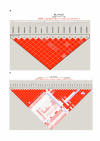Genetic polymorphisms of the GNRH1 and GNRHR genes and risk of breast cancer in the National Cancer Institute Breast and Prostate Cancer Cohort Consortium (BPC3)
- PMID: 19640273
- PMCID: PMC2729775
- DOI: 10.1186/1471-2407-9-257
Genetic polymorphisms of the GNRH1 and GNRHR genes and risk of breast cancer in the National Cancer Institute Breast and Prostate Cancer Cohort Consortium (BPC3)
Abstract
Background: Gonadotropin releasing hormone (GNRH1) triggers the release of follicle stimulating hormone and luteinizing hormone from the pituitary. Genetic variants in the gene encoding GNRH1 or its receptor may influence breast cancer risk by modulating production of ovarian steroid hormones. We studied the association between breast cancer risk and polymorphisms in genes that code for GNRH1 and its receptor (GNRHR) in the large National Cancer Institute Breast and Prostate Cancer Cohort Consortium (NCI-BPC3).
Methods: We sequenced exons of GNRH1 and GNRHR in 95 invasive breast cancer cases. Resulting single nucleotide polymorphisms (SNPs) were genotyped and used to identify haplotype-tagging SNPs (htSNPS) in a panel of 349 healthy women. The htSNPs were genotyped in 5,603 invasive breast cancer cases and 7,480 controls from the Cancer Prevention Study-II (CPS-II), European Prospective Investigation on Cancer and Nutrition (EPIC), Multiethnic Cohort (MEC), Nurses' Health Study (NHS), and Women's Health Study (WHS). Circulating levels of sex steroids (androstenedione, estradiol, estrone and testosterone) were also measured in 4713 study subjects.
Results: Breast cancer risk was not associated with any polymorphism or haplotype in the GNRH1 and GNRHR genes, nor were there any statistically significant interactions with known breast cancer risk factors. Polymorphisms in these two genes were not strongly associated with circulating hormone levels.
Conclusion: Common variants of the GNRH1 and GNRHR genes are not associated with risk of invasive breast cancer in Caucasians.
Figures

Similar articles
-
Determination of sequence variation and haplotype structure for the gonadotropin-releasing hormone (GnRH) and GnRH receptor genes: investigation of role in pubertal timing.J Clin Endocrinol Metab. 2005 Feb;90(2):1091-9. doi: 10.1210/jc.2004-0649. Epub 2004 Nov 16. J Clin Endocrinol Metab. 2005. PMID: 15546906
-
Haplotypes of the estrogen receptor beta gene and breast cancer risk.Int J Cancer. 2008 Jan 15;122(2):387-92. doi: 10.1002/ijc.23127. Int J Cancer. 2008. PMID: 17935138 Free PMC article.
-
Sequence variants of estrogen receptor beta and risk of prostate cancer in the National Cancer Institute Breast and Prostate Cancer Cohort Consortium.Cancer Epidemiol Biomarkers Prev. 2007 Oct;16(10):1973-81. doi: 10.1158/1055-9965.EPI-07-0431. Cancer Epidemiol Biomarkers Prev. 2007. PMID: 17932344
-
Non-syndromic congenital hypogonadotropic hypogonadism: clinical presentation and genotype-phenotype relationships.Eur J Endocrinol. 2010 May;162(5):835-51. doi: 10.1530/EJE-10-0083. Epub 2010 Mar 5. Eur J Endocrinol. 2010. PMID: 20207726 Review.
-
Hypogonadotropic hypogonadism and GNRH1 mutations in mice and humans.Front Horm Res. 2010;39:111-120. doi: 10.1159/000312697. Epub 2010 Apr 8. Front Horm Res. 2010. PMID: 20389089 Review.
Cited by
-
An Aging and Senescence-Related Gene Signature for Prognosis Prediction in Clear Cell Renal Cell Carcinoma.Front Genet. 2022 May 13;13:871088. doi: 10.3389/fgene.2022.871088. eCollection 2022. Front Genet. 2022. PMID: 35646056 Free PMC article.
-
Hormone-related pathways and risk of breast cancer subtypes in African American women.Breast Cancer Res Treat. 2015 Nov;154(1):145-54. doi: 10.1007/s10549-015-3594-x. Epub 2015 Oct 12. Breast Cancer Res Treat. 2015. PMID: 26458823 Free PMC article.
-
Pathways of distinction analysis: a new technique for multi-SNP analysis of GWAS data.PLoS Genet. 2011 Jun;7(6):e1002101. doi: 10.1371/journal.pgen.1002101. Epub 2011 Jun 9. PLoS Genet. 2011. PMID: 21695280 Free PMC article.
-
Thinking big: large-scale collaborative research in observational epidemiology.Eur J Epidemiol. 2009;24(12):727-31. doi: 10.1007/s10654-009-9412-1. Epub 2009 Dec 5. Eur J Epidemiol. 2009. PMID: 19967428 Review.
References
-
- Kaaks R, Rinaldi S, Key TJ, Berrino F, Peeters PH, Biessy C, Dossus L, Lukanova A, Bingham S, Khaw KT, Allen NE, Bueno-de-Mesquita HB, van Gils CH, Grobbee D, Boeing H, Lahmann PH, Nagel G, Chang-Claude J, Clavel-Chapelon F, Fournier A, Thiebaut A, Gonzalez CA, Quiros JR, Tormo MJ, Ardanaz E, Amiano P, Krogh V, Palli D, Panico S, Tumino R. Postmenopausal serum androgens, oestrogens and breast cancer risk: the European prospective investigation into cancer and nutrition. Endocr Relat Cancer. 2005;12:1071–1082. doi: 10.1677/erc.1.01038. - DOI - PubMed
-
- Eliassen AH, Missmer SA, Tworoger SS, Spiegelman D, Barbieri RL, Dowsett M, Hankinson SE. Endogenous steroid hormone concentrations and risk of breast cancer among premenopausal women. J Natl Cancer Inst. 2006;98:1406–1415. - PubMed
-
- Griffin JE, Ojeda SR, Eds. Textbook of endocrine physiology. New York: Oxford University Press; 1996.

